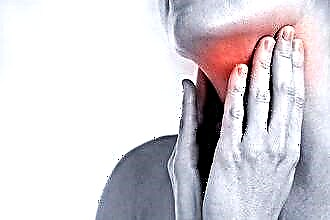Angina pectoris is a form of coronary heart disease (CHD), which is characterized by pain behind the breastbone due to acute insufficiency of blood supply to the myocardium. An attack that begins at different loads is called exertional angina, at night - rest. The patient is worried about choking, increased heart rate and a feeling of heart failure. Paroxysm progresses to circulatory failure and myocardial infarction. At home, mustard plasters are often put on the back with angina pectoris to stop the attack.
Why put mustard plasters: the effectiveness of the product
The use of powdered mustard for medical purposes is based on the principle of irritation of skin receptors, local increase in blood flow and development of redness (hyperemia). One of the active ingredients is allyl oil, which reflexively expands the lumen of the vessels of the internal organs, improving blood circulation, metabolism, and resolving inflammatory infiltrates.
The phytoncides contained in mustard provide an antibacterial effect, destroying many types of fungi, protozoa, in a short time.
Contraindications to the use of the method:
- diseases and skin irritation;
- elevated temperature (above 38 ° C);
- bleeding in the lungs;
- tuberculosis;
- allergy;
- children under 6 years of age;
- lack of skin sensitivity;
- pregnancy;
- history of oncology.
The indications for the use of mustard plasters are determined by the doctor. Uncontrolled self-administration of the procedure leads to exacerbation and development of complications of a number of diseases.
The properties of mustard plasters are most often used to treat colds, as well as:
- inflammation of the upper respiratory tract;
- bronchitis and pneumonia;
- pleurisy - inflammation of the membrane lining the chest;
- inflammation of muscle fibers (myositis);
- osteochondrosis;
- muscle and ligament injuries;
- hypertension.
Mustard plasters are placed on almost any part of the body, depending on the origin and cause of pain. It is important to remember that their use is prohibited in the area of the face and glands (thyroid, breast and others).
Areas of application for various pathologies are presented in the table:
| Zone | Disease |
|---|---|
| sub-, supra- and interscapular region, lateral surfaces of the chest | inflammatory pathologies of the respiratory system |
| feet | colds, bruises |
| occiput | migraine, increased blood pressure |
| to the place of origin of pain | myositis, sprain |
| nerve trunks | neuralgia |
| anterior chest surface | angina |
Should I use the method for angina pectoris?
Signs indicating an attack of angina pectoris:
- paroxysmal pressing, constricting pain;
- history of retrosternal pain or myocardial infarction in the past;
- irradiation - to the scapula, left shoulder and arm, less often - the lower jaw, upper abdomen.
In the event of an episode of angina pectoris, it is necessary to unfasten the belt, collar of clothes, provide an influx of fresh air, lay or seat the patient. It is recommended to give the patient a nitroglycerin tablet under the tongue. As a distraction (peppermint, menthol), you can put a mustard plaster on your heart.
The procedure is generally considered outdated and is used only in emergency cases that are not accompanied by a threat to the patient's life. It is unacceptable to regularly stop chest pain with mustard plasters, ignoring the use of medications.
You can put mustard plasters on the back in the interscapular region or the projection of the heart.
How to carry out the procedure correctly?
The package (leaf) is immersed in water with a temperature of 40-45 ° C, after 20-25 seconds, it is placed on the body. The patient is covered with a blanket. A mustard plaster is placed on the heart area for up to five minutes. In the event of severe redness, burning of the skin, the effect is considered achieved, the procedure is stopped. The rest of the powder is removed with a damp gauze swab.
Take a hot mustard bath for the upper or lower extremities. A tablespoon is diluted in a liter of water. Hands and feet are kept in the container for five to seven minutes. This procedure dilates blood vessels, relieves pain.
| Foot bath | Wraps | Using dry mustard for feet |
|---|---|---|
100 grams of mustard is bred in a bucket of warm water. The patient keeps tightly wrapped legs in the bathtub for no more than 20 minutes. At the end of the procedure, the remains of the powder are washed off, the feet are wiped, the patient is put to bed and provided with comfort. | Most often used in pediatric practice | Dry powder or sachets are placed in cotton socks, provide a thermal effect (with an additional pair of socks or wrapped in a blanket). The result depends on the duration of contact of the powder with the wet skin of the feet. |
Conclusions
Given the high risk of developing complications in coronary heart disease, diagnosis and rational selection of drugs is the main task of the patient and the doctor. In addition to traditional methods and drugs recommended by clinical protocols, traditional medicine is often used. With angina pectoris, mustard plasters are used only as an emergency and additional method of first aid.



